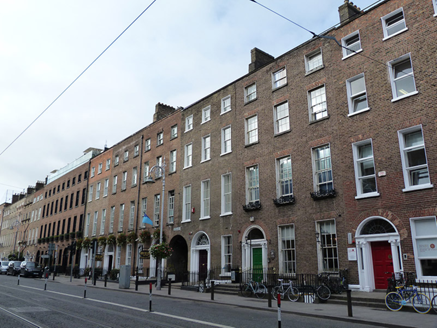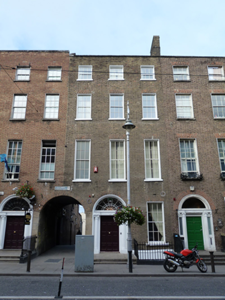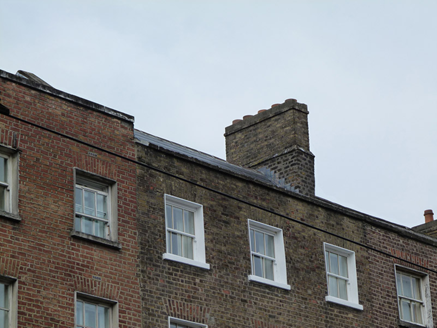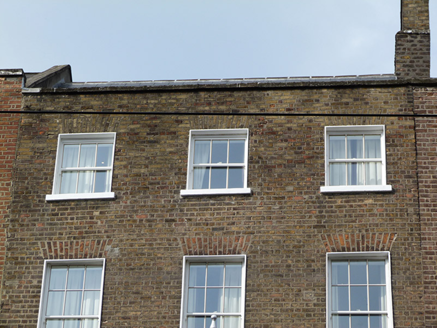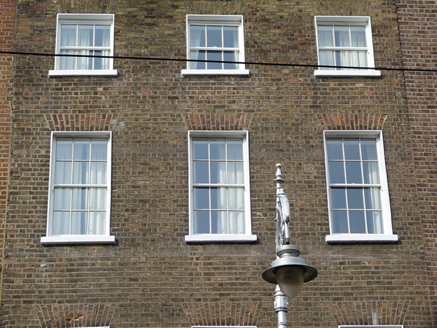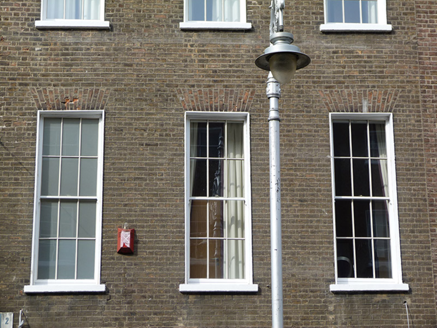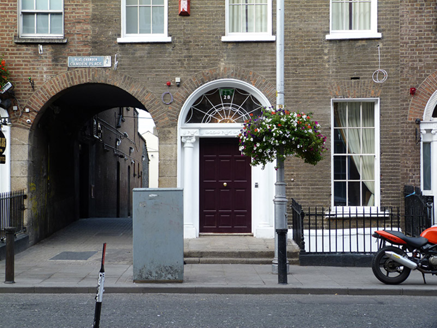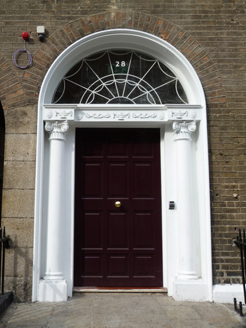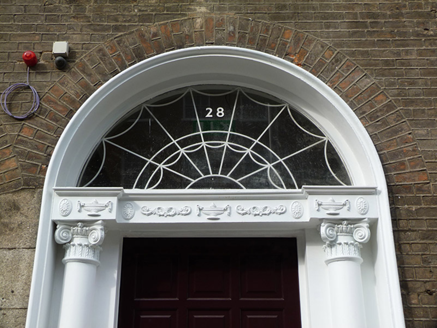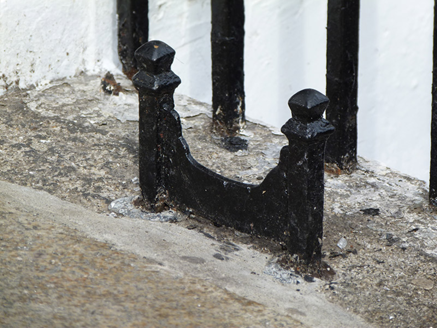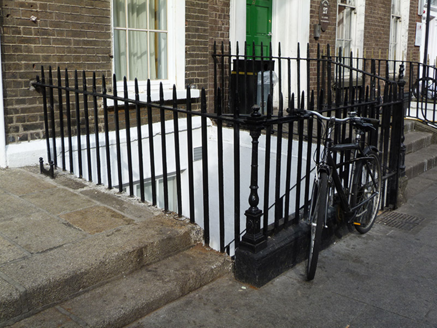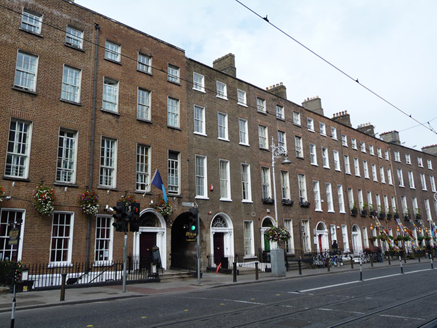Survey Data
Reg No
50920225
Rating
Regional
Categories of Special Interest
Architectural, Artistic
Original Use
House
In Use As
Hotel
Date
1800 - 1840
Coordinates
315725, 233076
Date Recorded
11/09/2015
Date Updated
--/--/--
Description
Terraced three-bay four-storey over basement former townhouse, built c. 1820, with integral carriage-arch to south-end and full-height bowed bay return to rear (west) elevation. Now in use as hotel. T-plan pitched artificial slate roof with flat-roofed-section to rear (west), hidden behind brick parapet with granite coping, parapet gutters and uPVC downpipe, shouldered brick chimneystacks with replacement clay pots to north party wall. Brown brick walls laid in Flemish bond over masonry plinth course, with rendered walls to basement. Rendered walls to re-entrant angle at rear. Square-headed window openings with brick voussoirs, granite sills and raised rendered reveals. Largely replacement six-over-six timber sliding sashes with ogee horns, three-over-three to third floor, number of recent timber casements to rear (west). Round-headed stair window opening to south elevation of return, with rendered reveals and multi-paned timber sash without horns. Round-headed door opening with brick voussoirs, rendered reveals, engaged Scamozzi Ionic columns supporting ornamented frieze and cornice, replacement cobwebbed fanlight and twelve-panelled timber door. Round-headed carriage-arch with brick voussoirs and dressed granite reveals to south-end, shared with No. 29 (50920226) and leading to Camden Place. Granite entrance platform to principal elevation with cast-iron boot scraper and granite steps flanked by cast-iron railings with decorative corner posts, over masonry plinth, continuing to north to enclose basement area. Street-fronted on west side of Harcourt Street. Flat-roofed single-storey extension abuts to rear, fronting onto Camden Place.
Appraisal
Though altered for use as a hotel, the building positively contributes to the wider streetscape, which retains uniform rooflines, vertical massing and restrained detailing. Harcourt Street was opened 1777 by John Hatch, barrister and Seneschal of the Manor of St. Sepulchre. Development was sporadic until the late 1790s when Messrs Hatch, Wade and Whitten obtained approval from the Wide Street Commissioners for the further development of the street. Built as a unified terrace comprising Nos. 24-31 (50920221-8), the group is characterised by the unusually narrow three-bays of the principal facades, and forms part of a relatively intact street of late-Georgian and early-Victorian townhouses.
